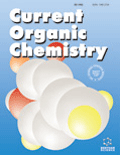
CURRENT ORGANIC CHEMISTRY
Scope & Guideline
Advancing the Frontiers of Organic Chemistry
Introduction
Aims and Scopes
- Organic Synthesis Methodologies:
The journal explores diverse synthetic methodologies, including but not limited to multicomponent reactions, organocatalysis, and microwave-assisted synthesis, aimed at enhancing efficiency and sustainability in organic synthesis. - Green Chemistry Practices:
A significant emphasis is placed on environmentally friendly practices, such as green synthesis, the use of ionic liquids, and biocatalysis, promoting sustainable chemistry that minimizes waste and utilizes renewable resources. - Biological Applications of Organic Compounds:
Research papers often discuss the biological activities of synthesized compounds, including anticancer, antimicrobial, and anti-inflammatory properties, linking organic chemistry with medicinal applications. - Catalysis and Nanomaterials:
The journal covers advancements in catalytic processes, including the development of novel heterogeneous and homogeneous catalysts, as well as the application of nanomaterials in facilitating organic transformations. - Heterocyclic Chemistry:
A core focus is on the synthesis and applications of heterocycles, which are crucial in drug discovery and development, with extensive research on their biological activities and therapeutic potentials.
Trending and Emerging
- Multicomponent Reactions (MCRs):
There is a growing emphasis on multicomponent reactions, which allow for the simultaneous formation of multiple bonds and complex structures in a single step, making synthesis more efficient and versatile. - Sustainable and Green Synthesis:
Research highlighting sustainable practices, such as the use of biodegradable solvents and renewable resources, has gained momentum, reflecting a significant trend in the organic chemistry community towards environmentally friendly methodologies. - Application of Nanomaterials in Synthesis:
The integration of nanomaterials in organic synthesis is increasingly prominent, showcasing their role as catalysts and facilitators in enhancing reaction efficiencies and selectivities. - Computational Chemistry and Molecular Docking:
There is a rising interest in computational approaches to support synthetic work, particularly in molecular docking studies that predict the biological activity of compounds, enhancing the drug discovery process. - Biocatalysis and Green Catalysts:
The use of enzymes and biocatalysts in organic synthesis is on the rise, reflecting a shift towards more sustainable and specific methodologies that reduce environmental impact.
Declining or Waning
- Traditional Synthetic Methods:
There has been a noticeable decrease in papers focused on conventional synthetic methodologies, as researchers increasingly pivot towards more innovative and sustainable approaches to organic synthesis. - Non-Green Alternatives:
The emphasis on non-green synthetic methodologies has decreased, reflecting a broader trend in the field towards sustainability and environmental responsibility in organic chemistry. - Single-Step Syntheses:
Research focusing solely on single-step reactions has declined, as the field moves towards more complex multicomponent reactions that provide more efficient pathways to target compounds. - Basic Research on Established Compounds:
There is less focus on the synthesis of well-established compounds without novel applications or modifications, indicating a shift towards more innovative and application-driven research.
Similar Journals
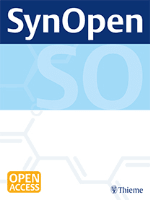
SynOpen
Fostering Collaboration for a Sustainable FutureSynOpen is an esteemed open-access journal published by GEORG THIEME VERLAG KG, based in Germany, dedicated to advancing the fields of Biomaterials, Catalysis, Materials Science, and Organic Chemistry. Since its inception in 2017, the journal has established itself as a vital platform for researchers wishing to disseminate their findings in a rapidly evolving scientific landscape, earning a commendable Q2 ranking in Materials Science (miscellaneous) and Q3 in other key categories for 2023. With an increasing impact on its disciplines, SynOpen aims to foster interdisciplinary collaboration and innovation by providing unrestricted access to high-quality research, thus promoting a broader reach and visibility for authors. Scholars, professionals, and students alike can benefit from the comprehensive range of topics covered, as the journal's commitment to presenting cutting-edge studies and methodologies positions it as a crucial resource for contemporary scientific inquiry.
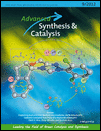
ADVANCED SYNTHESIS & CATALYSIS
Elevating the standards of synthetic and catalytic research.ADVANCED SYNTHESIS & CATALYSIS is a prestigious academic journal published by Wiley-VCH Verlag GmbH, based in Germany. This journal, with ISSN 1615-4150 and E-ISSN 1615-4169, plays a pivotal role in the fields of Chemistry and Chemical Engineering, earning commendable rankings such as Q2 in Catalysis and Q1 in Organic Chemistry in 2023. Its high impact factor and recognition—ranking #18 in both Organic Chemistry and Catalysis—further underscore its significance as a platform for groundbreaking research and innovative methodologies. Spanning from 1996 through 2024, ADVANCED SYNTHESIS & CATALYSIS aims to disseminate high-quality, cutting-edge studies related to synthetic processes and catalytic technologies, ensuring accessibility via their open access options. By fostering a vibrant scholarly community, this journal serves as an essential resource for researchers, professionals, and students dedicated to driving advancements in synthetic and catalytic chemistry.
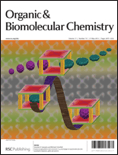
ORGANIC & BIOMOLECULAR CHEMISTRY
Advancing the frontiers of organic and biomolecular science.ORGANIC & BIOMOLECULAR CHEMISTRY is a prestigious academic journal published by the Royal Society of Chemistry, dedicated to advancing the fields of organic and biomolecular chemistry. With its ISSN of 1477-0520 and E-ISSN of 1477-0539, this journal plays a pivotal role in disseminating high-quality research and contributing to the scientific community, particularly in biochemistry, organic chemistry, and physical and theoretical chemistry. Currently ranked in the third quartile for Biochemistry and the second quartile for Organic Chemistry and Physical and Theoretical Chemistry, it caters to a diverse audience of researchers, professionals, and students who seek insightful studies and reviews. With a publication history spanning since 2003 and ongoing till 2024, the journal fosters open access to its articles, encouraging the free exchange of knowledge. Situated in the vibrant academic environment of Cambridge, UK, ORGANIC & BIOMOLECULAR CHEMISTRY serves as a vital resource for innovative research at the intersection of chemical sciences.

HETEROCYCLIC COMMUNICATIONS
Connecting Scholars in Heterocyclic ScienceHeterocyclic Communications, published by De Gruyter Poland Sp. z o.o., is a leading open-access journal dedicated to the field of organic chemistry. With its ISSN 0793-0283 and E-ISSN 2191-0197, this journal has been disseminating significant research findings since its inception in 1994, and continues to contribute to the scientific community through 2024. Based in Germany, Heterocyclic Communications occupies a reputable position, classified in the third quartile (Q3) of organic chemistry journals with a Scopus rank of #119 out of 211, indicating its growing influence in the field. The journal is committed to fostering scholarly communication and knowledge exchange among researchers, professionals, and students, providing a platform for innovative studies and insights into heterocyclic compounds and their applications. As an open-access journal since 2019, it ensures that valuable research is readily available to a global audience, enhancing collaboration and advancement in organic chemistry research.

Organic Communications
Exploring the depths of Organic Chemistry for a sustainable future.Organic Communications is an esteemed journal published by ACG PUBLICATIONS, dedicated to advancing the field of Organic Chemistry. Established in 2008 and continuing its journey into 2024, this scholarly journal provides a platform for the dissemination of high-impact research findings, reviews, and methodological advances that shape the landscape of organic chemistry. Located in Turkey, it has made notable strides with a current Scopus rank of #148 out of 211 within its category, placing it in the 30th percentile. As a Q3 journal in organic chemistry, it caters to a diverse readership of researchers, professionals, and students, offering insights that bridge theoretical research and practical applications. Although it does not operate under an open access model, Organic Communications is poised to contribute significantly to the academic community by enabling access to crucial research developments and fostering collaboration within the discipline.

RUSSIAN CHEMICAL BULLETIN
Advancing the Frontiers of Chemistry.RUSSIAN CHEMICAL BULLETIN, published by SPRINGER, serves as a pivotal resource in the field of general chemistry, covering a wide array of topics that impact both theoretical and applied chemistry. With an ISSN of 1066-5285 and a presence since 1993, this journal provides a platform for disseminating significant research findings, practical applications, and novel methodologies within the broader chemistry community. While it currently holds a Q3 ranking in the Chemistry (miscellaneous) category and occupies the 230th position out of 408 in the Scopus rankings, its reputation continues to grow, fostering collaboration and innovation among researchers and professionals alike. Although the journal does not offer an open-access model, it is committed to making findings accessible within the academic community, ensuring that valuable insights can inform future research. With an anticipated convergence of studies extending to 2024, the RUSSIAN CHEMICAL BULLETIN remains an essential reference for those dedicated to advancing chemical science.
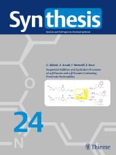
SYNTHESIS-STUTTGART
Shaping Tomorrow's Chemistry Through Rigorous Scholarship.SYNTHESIS-STUTTGART
Published by the esteemed Georg Thieme Verlag KG, SYNTHESIS-STUTTGART stands as a vital resource in the field of Chemistry, specifically focusing on Organic Chemistry and Catalysis. With an impressive publication history dating back to 1970 and continuing through 2024, it serves as a platform for innovative research and developments in synthetic methodologies and their applications. The journal holds a significant impact factor, reflecting its influence within the academic community, and is recognized in the Scopus rankings as a reputable source in its categories, with a rank of #99/211 in Organic Chemistry and #43/68 in Catalysis. Researchers, professionals, and students alike can benefit greatly from its content, which upholds rigorous peer-review standards and contributes to the global discourse in these critical scientific domains.
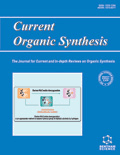
CURRENT ORGANIC SYNTHESIS
Unlocking the Secrets of Organic CompoundsCURRENT ORGANIC SYNTHESIS, published by Bentham Science Publishers Ltd, is a leading journal in the field of organic chemistry and biochemistry that serves as a vital platform for researchers and professionals advancing the synthesis of organic compounds. With an ISSN of 1570-1794 and an E-ISSN of 1875-6271, it boasts a significant impact within its category, ranked in the Q3 quartile for both biochemistry and organic chemistry as of 2023. The journal covers innovative research and reviews that enhance our understanding of organic synthesis methodologies, showcasing contributions that advance the field. Operating from Sharjah, United Arab Emirates, CURRENT ORGANIC SYNTHESIS has evolved since its inception in 2005, providing access to a wealth of information essential for students, professionals, and researchers alike. While it currently does not offer open access, the journal continues to maintain a strong community of scholars dedicated to fostering dialogue and innovation in the organic sciences.

Heterocyclic Letters
Connecting Researchers Through Cutting-edge Heterocyclic InsightsHeterocyclic Letters is an esteemed journal in the field of synthetic organic chemistry, published by RAMAN PUBL. With ISSN 2231-3087 and E-ISSN 2230-9632, this journal aims to disseminate original research and innovative findings related to heterocyclic compounds, which play a crucial role in medicinal chemistry, material science, and agricultural chemistry. Heterocyclic Letters provides a platform for researchers, professionals, and students to share their insights and advancements, thus fostering academic collaboration and knowledge transfer. The journal is dedicated to maintaining high-quality standards in research publication, making it an essential resource for anyone focused on the latest developments in heterocyclic chemistry. Although it does not currently offer Open Access options, the journal’s rigorous peer-review process ensures that only the most credible and impactful studies are published, contributing significantly to the advancement of the field.
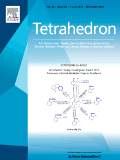
TETRAHEDRON
Advancing the frontiers of chemistry and biochemistry.TETRAHEDRON, published by Pergamon-Elsevier Science Ltd, is a leading peer-reviewed journal that has been pivotal in advancing the fields of Biochemistry, Drug Discovery, and Organic Chemistry since its inception in 1957. With an ISSN of 0040-4020 and an E-ISSN of 1464-5416, this journal provides a platform for the dissemination of cutting-edge research and innovative methodologies that contribute significantly to the scientific community. Recognized for its rigorous editorial standards, TETRAHEDRON has been categorized in the Q3 quartile for 2023 across its relevant fields, reflecting its solid impact within the scientific sphere. Despite the current absence of Open Access options, the journal continues to engage a diverse readership, offering invaluable insights and advancements that fuel both academic and industrial applications. With an ongoing commitment to excellence, TETRAHEDRON remains an essential resource for researchers, professionals, and students aiming to stay at the forefront of chemistry and biochemistry research.